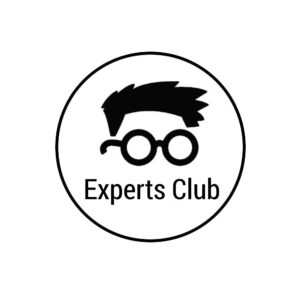
Almost all member companies of the European Business Association (EBA) complain about a shortage of personnel: 74% consider this problem to be significant, 21% report a partial shortage, and only 5% did not experience a shortage of personnel in 2025, according to a study of the Ukrainian labor market by the EBA.
“It is most difficult to fill vacancies for workers and technical specialists due to staff turnover and low motivation to work offline. There is also an acute shortage of narrow-profile specialists with knowledge of English, who are needed by international companies,” according to the results of the study published by the association’s press service.
It is emphasized that, in addition to them, it is difficult to find sales managers and middle managers, as their work requires constant presence, and booking opportunities are limited.
In addition, 46% of companies noted that the departure of young professionals aged 18-22 had a definite or significant impact on their activities. 42% did not feel any impact, while 12% noted that they did not yet have enough data to assess the situation.
In addition to the labor shortage, key trends in the labor market include inflated salary expectations on the part of candidates, the impact of mobilization, difficulties in booking workers, and staff turnover.
Among the companies surveyed, 46% noted that all employees are currently working from within Ukraine, compared to 35% of companies last year. At the same time, 47% have up to 10% of employees working from abroad, and only 5% of companies have more than 10% of such employees. The rest (approximately 2%) do not have accurate information.
Most employers (63%) do not plan to require employees to return to the office in the near future, 37% are considering this possibility, but 12% of them do not plan to bring back all categories of employees.
As for companies’ plans, most have a clear vision for development in 2026.
“The main focus of business is on increasing salary levels – this is planned by 94% of companies. In particular, 28% of companies anticipate growth in the range of 11-15%, 23% – 5-10%, 10% expect growth of 16-20%, and 6% of companies do not intend to raise salaries in 2026,” according to the EBA.
As for other plans, 36% intend to increase the number of employees next year, 55% do not plan any changes, and 9% plan to reduce their workforce. 17% of companies reported a redistribution of functions towards multifunctionality.
During 2025, most companies (83%) actively recruited new employees. Another 3% opened vacancies exclusively for internal candidates, and only 14% of respondents did not change their headcount.
In addition, 25% are planning to increase their budgets for staff training and development, 18% of respondents are planning to enter new markets and search for partners, 6% may change management or open new regional offices, 5% will reduce training costs in 2026, and 3% are planning to close offices.
The survey was conducted from October 2 to November 1, 2025, with 126 human resources professionals participating (41% department heads, 33% middle managers, 22% top management, and 4% junior staff). Among the respondents, 56% represent large businesses, 32% represent medium-sized businesses, and 12% represent small businesses. 58% of companies are international, and 42% are Ukrainian.

PJSC Centravіs Production Ukraine (Nikopol, Dnipropetrovsk region), part of the Centravіs Ltd. holding, reduced its net profit by 2.5 times compared to the same period last year, to UAH 158.111 million from UAH 398.888 million, based on the results of its operations in January-September of this year.
According to the company’s interim report, which is available to Interfax-Ukraine, the company increased its net income by 1.4% to UAH 3 billion 961.714 million in the first nine months of this year.
The uncovered loss at the end of September 2025 amounted to UAH 888.623 million.
In order to ensure the necessary volume of pipe billets, the company diversifies its purchases by purchasing pipe billets from foreign manufacturers. About 70% of pipe billets are purchased abroad. The company continues to cooperate with Ukrainian pipe billet manufacturers, whose production facilities are located in the Dnipropetrovsk and Zaporizhzhia regions.
In the first nine months of 2025, the company produced 9,974 thousand tons of pipes.
The company is export-oriented, with exports accounting for 96% of sales in the first nine months of 2025. The largest markets for its products are Germany, Italy, and the United States. In addition, pipe products are also sold in the Middle East, Asia, and Australia. In the first nine months of 2025, 9,919 thousand tons of pipes were sold, of which 9.9 thousand tons were exported.
An additional incentive for the company’s pipe exports is the temporary measures to liberalize trade and abolish customs tariffs and quotas by European countries and the US. In particular, in 2023, the EU and the US extended the suspension of customs tariffs and quotas on Ukrainian goods exported to European and American markets until June 1, 2024. In May 2024, this suspension was extended until June 5, 2025.
The company constantly monitors liquidity and credit portfolio management. The company pays all current loan payments in accordance with the repayment terms specified in the current agreements. On April 15, 2025, the company signed an agreement with its main creditor, Ukreximbank, on the long-term restructuring of its loan portfolio, namely the extension of long-term lines of €19,369,180 and $3,740,450 until February 22, 2031 (before the signing, the term was until February 22, 2026), and a short-term line of EUR 9 million was extended until March 3, 2028 (before the signing, only short-term extensions were carried out). This event has a significant positive impact on the company’s liquidity and solvency, allowing it to reduce its current debt burden and ensure stable cash flows.
In addition, to meet the company’s operational needs, on May 5, 2025, a general credit agreement was signed with the commercial bank Pivdenny for a total amount of short-term lending of UAH 50 million secured by a VAT declaration, which allowed the company to optimize cash flows and improve working capital. In July 2025, the company entered into an additional agreement with the bank to reduce the interest rate on short-term loans in national currency from 19% to 18% per annum, which has a positive impact on liquidity indicators.
As of September 30, 2025, the company applied for a VAT refund in the amount of UAH 57.834 million (as of December 31, 2024 – UAH 83.925 million), which was received from the state budget after the reporting date. Based on the results of the audits, the tax authorities did not confirm the VAT refund in the total amount of UAH 23.806 million. The company is challenging the results of the VAT audit in court.
In 2024, the company received a net profit of UAH 310.045 million, while it ended 2023 with a loss of UAH 384.664 million. At the same time, it increased its net income by 3.7% to UAH 5 billion 226.606 million. The company produced 14,017 thousand tons of pipes (in 2023 – 12,412 thousand tons), with exports accounting for 90.1% in 2024.
With regard to environmental protection, the board of directors considered issues related to reducing the harmfulness of production by improving production technologies, in particular, the transition to azote-free pipe pickling. In accordance with the requirements of Directive 2003/87/EC, a decision was made to implement a system for monitoring, reporting, and verifying greenhouse gas emissions and quarterly CBAM reporting.
According to the report, the profit in the current and previous reporting periods was mainly due to the forgiveness of debt on accrued interest under a loan agreement with a related non-resident entity, Centravis Finance Ltd.
On September 24, 2025, the sole shareholder of the company, Centravis SA (Switzerland), decided to increase the authorized capital by issuing additional shares worth UAH 4,335,171 thousand without a public offering.
The shares were valued by Uvecon Consulting Company LLC. Participants in the share placement must submit an application for the purchase of shares to the authorized person between February 28 and April 28, 2026.
Sentravis was founded in 2000 and is one of the ten largest manufacturers of seamless stainless steel pipes in the world. Its main production facilities are located in Nikopol (Dnipropetrovsk region). In 2023, a branch of the company was opened in Uzhhorod.
The company’s main activity is the production and sale of seamless stainless steel pipes. As of September 30, 2025, the company employed 1,428 people (as of September 30, 2024, 1,541 people).
Centravіs Ltd. was established on the basis of Nikopol Stainless Steel Pipe Plant CJSC and the service and trading companies of YUVIS Production and Commercial Enterprise LLC. Its shareholders are members of the Atanasov family. Centravis Ltd. owns 100% of the shares of PJSC “Centravis Production Ukraine.”
According to the NDU for the third quarter of 2025, Centravis SA (Centravis AG) (Centravis Ltd) (Switzerland) owns 100% of the shares of PJSC “Centravis Production Ukraine”.
According to the company’s information, as of September 30, 2025, the ultimate beneficial owners of the company are Yuriy Atanasov, who owns 66.7% of the shares, Konstantin Atanasov with 16.65%, and Kateryna Atanasova-Milovanova with 16.65%. The 6,668 shares in the authorized capital of UVIS Group Limited, which belonged to Vasyl Atanasov, who died on September 18, 2023, were inherited by Yuriy Atanasov.
The authorized capital currently amounts to UAH 202.560 million, with a nominal value of UAH 1 per share.

The first dealership center of the new premium brand of electric and hybrid cars Avatr, which enters the Ukrainian market, was opened on Stolichnoye highway in Kiev by the official distributor of the new brand – Atlant Motors Ukraine LLC (part of the Atlant Motors group of companies), the press service of the company reported.
The official presentation of the brand took place on November 20. “Atlant Motors Ukraine” will provide a full cycle – from car sales to service, warranty of the manufacturer and sale of original spare parts.
“Atlant Motors Ukraine” informs about plans to expand the network of official dealer centers in different regions of Ukraine. In particular, by the end of this year there will be official dealers in Odessa, Kiev, Kharkov, and in 2026 AVATR brand showrooms will be opened in Lviv and Dnipro.
At the official opening three models of the brand were presented, in particular Avatr 07 – urban mid-size hybrid or electric SUV. The car is offered in two variants: all-electric (BEV) and series hybrid (REEV). The REEV version is equipped with a hybrid setup based on a 1.5-liter turbo engine and electric motors with a total output of up to 492 hp.
Atlant Motors Group of Companies has been operating in the Ukrainian market for more than 20 years and represents, in particular, the Renault brand in Kharkov and Kharkov region. The group also includes Atlant Motors Energy (Kharkiv) – one of the largest suppliers of electric cars from China to Ukraine, which, according to YouControl data, has net income of UAH 619.9 million in 2024 and UAH 1.28 billion in January-September 2025.

The second-largest Ukrainian mobile operator, VF Ukraine (Vodafone Ukraine, VFU), which redeemed its own Eurobonds worth almost $7 million at the end of May in connection with the payment of dividends, received bids for a total nominal amount of $127.14 million at the next tender for their repurchase with a total nominal value of $10.84 million.
According to the company’s stock exchange announcement, some of the bonds were returned to their owners due to the impossibility of splitting the nominal value, while the rest were accepted with a scaling factor of 0.1150681.
As a result, on the settlement date of November 20, bonds with a total nominal value of $10 million 773.23 thousand were purchased under the tender offer. All of them were canceled, and after such cancellation, the total nominal value of bonds remaining in circulation is $281 million 759.03 thousand, the company said.
As reported, in the first two tenders, Vodafone Ukraine repurchased bonds for an amount equivalent to EUR 1 million. The debut repurchase was announced at a price of 99% of the nominal value, the second at 90% of the nominal value. The company did not announce the results of the second buyback on the stock exchange, while the scaling factor for the first buyback was 0.0040355668.
Following the results of the third tender, where the redemption price was reduced to 85% of the nominal value and the offer was limited to $4.67 million, Vodafone Ukraine received bids for $53.395 million and satisfied them in the amount of $5.208 million. The scaling factor was 0.1315451889487317.
The fourth tender was announced on August 13 and was subsequently extended seven times. As a result, the redemption price was increased from 85% to 98%, and the redemption amount to $10.84 million.
Bonds maturing in February 2027 with a coupon rate of 9.625% per annum were issued for $300 million. After the cancellation of the redeemed bonds, the total nominal value of the bonds remaining in circulation is $292.532 million.
The redemption of Eurobonds is related to the fact that on April 24, 2025, VFU announced the payment of dividends to its shareholder in the amount of UAH 660.245 million ($15.9 million at the exchange rate specified in the announcement) for 2024. According to the restrictions of the National Bank, they will be paid in separate monthly dividend payments. Each such monthly dividend is expected to amount to UAH 1 million, which is equivalent to EUR 1 million. The company emphasized that, under the terms of the bond issue, it must offer all bondholders the opportunity to apply for their sale for an amount equal to the dividends paid outside Ukraine. Since then, seven monthly dividend payments have been made, each equivalent to approximately EUR 1 million.
As reported, VFU increased its net profit by 10.7% to UAH 3 billion 446.80 million and its revenue by 13.3% to UAH 19.03 billion in the first nine months of this year.
The report noted that the company will receive loans from related parties this year to service and redeem Eurobonds. In February, the parent company Telco Investments B.V. provided $49.59 million for partial repayment of Eurobond debt. In June, an agreement was signed with Telco Investments for a dollar credit line in the amount equivalent to UAH 660 million, at 10% per annum, maturing in 2028.
Finally, in July 2025, a loan agreement was signed with the Dutch company Cemin B.V. for $10 million at 10% per annum, with a repayment date no later than the end of 2027, but not earlier than the maturity of the Eurobonds. The funds are credited in tranches to the company’s bank account in a foreign bank and are to be used to redeem bonds, which Vodafone Ukraine is doing in connection with the resumption of dividend payments this year.

Mexico’s economy contracted by 0.3% in the third quarter relative to the previous three months, according to final data from the country’s statistics office. The estimate matched preliminary data. Analysts on average also did not expect a revision, Trading Economics reported.
The downturn in the economy is being recorded for the first time since the fourth quarter of last year. Mexico’s GDP grew 0.6% in the second quarter.
Mexico’s economy contracted at an annualized rate of 0.1% in the third quarter. A contraction of 0.2% was previously reported.
The Experts Club analytical center has previously made a video analysis and forecast on the macroeconomy of Ukraine and major countries of the world.
https://youtu.be/kQsH3lUvMKo?si=1StxlkcIzQlpF0_q
ECONOMY, economy macroeconomy, EXPERTS CLUB, MACROECONOMY, MAXIM URAKIN